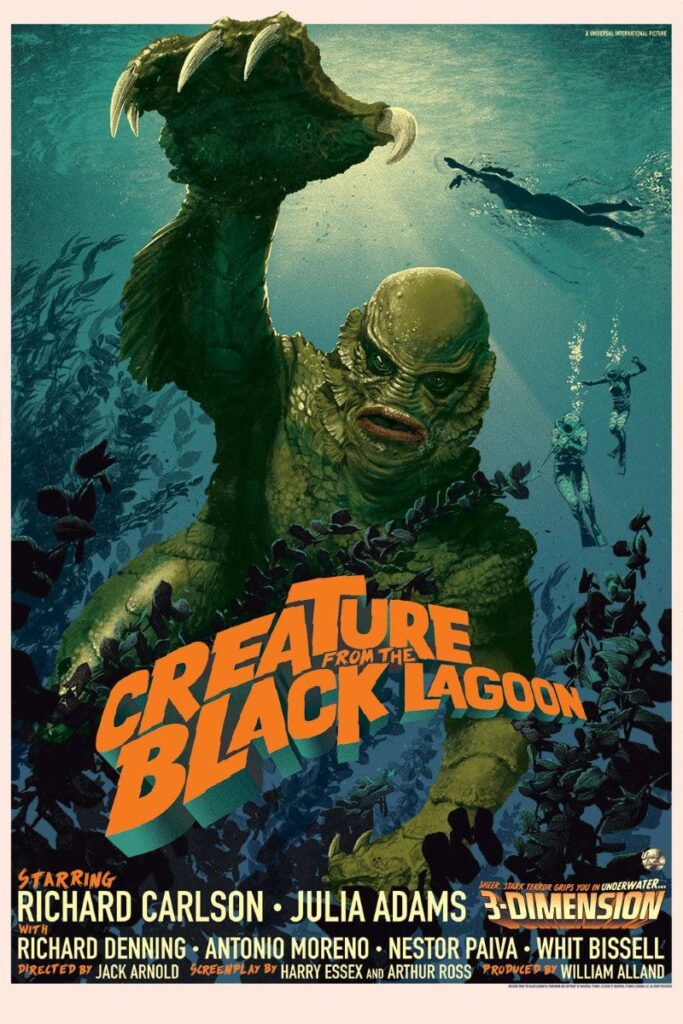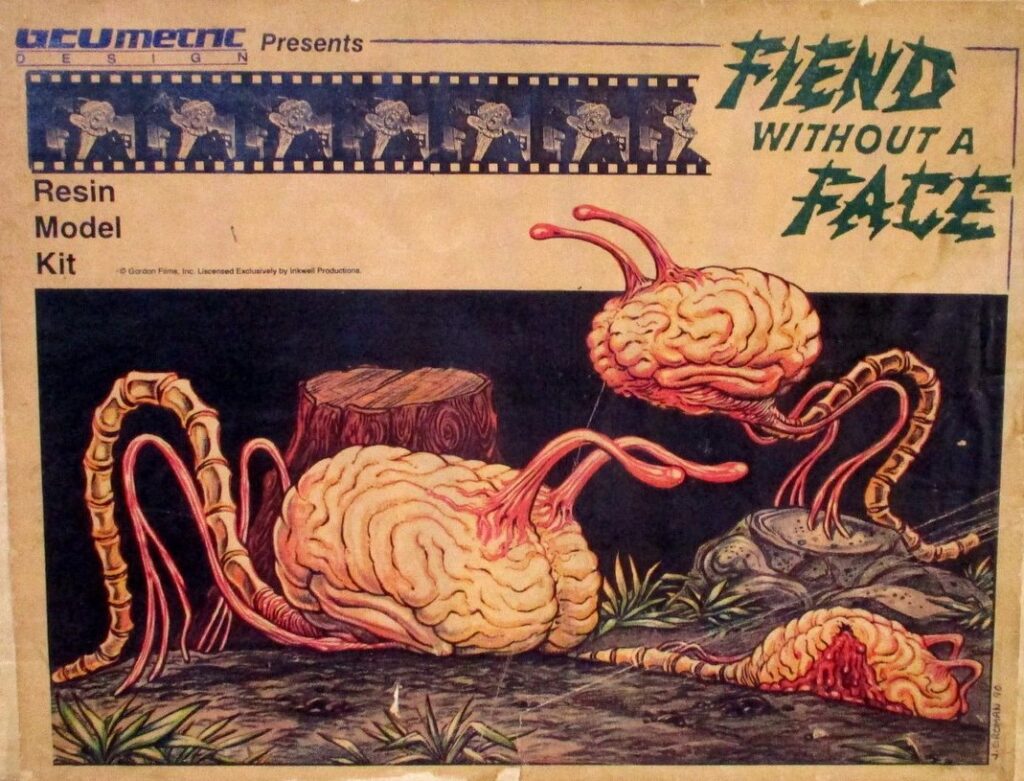Not of This Earth for DCC
1957 saw Not of This Earth hit U.S. movie theaters. Roger Corman, B-movie genius, brought together the talents of blocky Paul Birch and platinum-blond Beverly Garland in a movie with a truly chilling premise executed with an almost total lack of any sort of tension or character development. Several scenes that are meant to evoke awe or dread instead induce eye-widening impatience for the scene’s end. The theatrical version’s 67-minute running time seems to drag on and on. Still, Not of This Earth is not without its charms, which is par for Corman, who manages to make his trademark amateurishness both irritating and engaging at the same time.
And so today we adapt Paul Birch’s alien Mr. Johnson for DCC.
Davannians
Scholars aren’t quite sure where Davanna is. It could be a distant kingdom, or a parallel dimension, or an alien world. Whatever the truth, Davannians appear very much like humans, except for their eyes, which are milky white with pale gray pupils. Some time past, terrible wars ravaged Davanna, contaminating the very air with harmful but invisible energies. Because of this, the Davannians are a dying race, afflicted with a strange disease that slowly turns their blood from liquid to fine powder. The only way to stave off death from this condition to consume human or demihuman blood.
Since Davannians are both highly intelligent and deeply pragmatic, they acquire this blood by capturing inferior species (defined as anyone not a Davannian), transporting these captives to blood farms. The captives are kept telepathically sedated and mechanically restrained while systems of needles, tubes, and glass jars pump nutrient-rich fluids in and healthy blood out.
Init +4; Atk weapon +4 melee or ranged (by weapon type); AC 10 (unarmored); HD 4d8; MV 30′; Act 1d20; SP death glare, sensitivity to loud noises, telepathy; SV Fort +2, Ref +2, Will +4; AL L.
Davannians are competent fighters, but they prefer to use their strange powers against enemies. Davannians communicate via telepathy, which transcends language barriers. The initial range of their telepathy is only 30 feet and requires line of sight, but once contact is established, a Davannian can communicate with the target over distances measured in miles. Davannian telepathy can also induce paralysis (lasting 2d3 minutes), erase or modify memories, or implant post-hypnotic suggestions. These effects require line of sight and have a range of 60 feet. They also permit a DC 16 Will save to resist. There is no fixed duration for telepathically altered memories or implanted suggestions, but killing the Davannian ends the effects.
The Davannians’ most potent weapon is their fearsome glare. This is not a gaze attack. The target need not meet the Davannian’s stare to be effected, but the target must be visible and within 30 feet. The glare can crack stone or shatter glass. Against a creature, the glare forces a DC 16 Will save to avoid being immediately rendered unconscious and reduced to 1 hit point, and the following round suffering 1d6 points of damage from massive internal trauma. If the Will save versus the glare succeeds, the target suffers no ill effects.
Davannians have exceptional hearing, making them difficult to surprise but vulnerable to loud noises. They suffer a -4 penalty on saving throws versus sonic attacks. A loud noise, such as a scream, within 5 feet forces a Davannian to make a Fort save to avoid being stunned for 1 round. The GM determines the DC of this saving throw. A shrill scream ought to have a DC of at least 12.
Davannians use strange devices, such as blood extractors carried in small boxes and metallic frames that permit both telepathic communication over vast distances and the teleportation of objects and creatures to and from Davanna.





